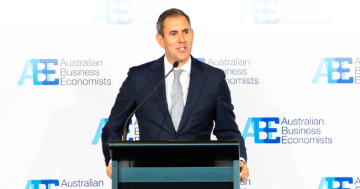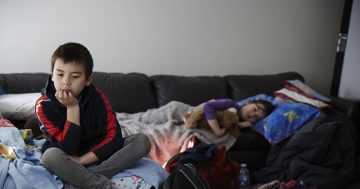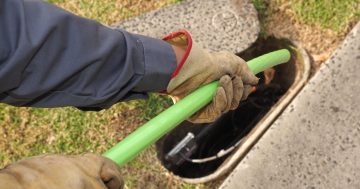Julie Smith* says the pandemic has brought to the forefront the gender-blind approach to economic management.
 There has been spirited debate about what the Government should be doing, and how quickly it should be doing it, in response to the unprecedented health and economic crisis from COVID-19.
There has been spirited debate about what the Government should be doing, and how quickly it should be doing it, in response to the unprecedented health and economic crisis from COVID-19.
At the centre of debate is closure of schools and childcare as we are urged — or required — to work at home.
Meanwhile, female-dominated professions at the forefront of the crisis — healthcare workers, teachers, and childcare providers — are struggling with the dilemmas of their now hazardous work environments.
As a frustrated West Australian teacher recently wrote in a local news outlet: “I usually love teaching, but right now I hate the fact that I am a teacher.”
“We are not babysitters for the economy.”
“You keep the schools open, and I find myself in the unenviable position of being exposed to high-risk behaviours by a beautiful bunch of guileless innocents.”
In her frustration, the anonymous WA teacher captured the essence of a critical economic problem that is being ignored.
So far, the response has focused on the market economy, including the unquestionable importance of quickly redressing the gaps in our social security system for those without paid employment.
Yet the letter from Anonymous highlights that the non-market production of households, including women’s unpaid care and domestic work, is now a crucial economic buffer.
A feminist economic perspective on responses to economic disruptions brought by COVID-19 may reveal new ways of thinking about the problem, and how we might better respond to protect health, productivity and wellbeing.
The first thing is to recognise that the market is only one part of the economy.
Broadly speaking, gross domestic product (GDP) is the value of all goods and services bought and sold.
Nevertheless, statisticians estimate that in normal times around half of all economic activity is unpaid (and therefore uncounted) production by households.
The Australian Bureau of Statistics (ABS) calculated in 2014 that the value of household production was $416 billion to $586 billion — or between 41.6 per cent to 58.7 per cent of GDP.
Experts also recognise that during times of market instability, such as the 1930s depression and the 2007–08 Global Financial Crisis, home production was an important buffer for living standards.
This is because when incomes drop, more goods and services are produced and exchanged through social and family networks (think, for example, of eggs, vegetables, haircuts, childcare) rather than being purchased.
The conventional wisdom of managers during the current crisis of “home working” seems to be that a 20–30 per cent “productivity loss” is to be accepted as normal.
This perspective is understandable for employers, but unforgivable for governments when market childcare and education services are operating at much reduced capacity, and the locus of this economic activity has shifted dramatically into homes.
This example illustrates how production and productivity move between the household and market sector but are only measured and recognised when they are paid for.
This is hardly a 20 per cent drop in productivity when around half these schoolchildren are now being cared for in the non-market household sector.
An economic study conducted by OECD Statistics in 2017 revealed the macroeconomic magnitude of such effects.
Economists from the Organisation for Economic Cooperation and Development (OECD) estimated that for countries such as the UK and the US, GDP growth had been exaggerated by around 0.5–1.8 percentage points a year since the 1970s because the increased use of paid childcare services had been counted in GDP as more economic productivity, rather than as a shift of unpaid work from home to the market economy — a reallocation rather than increase in economic activity.
So far, the Government has increased employment benefits, and ramped-up loans, subsidies and tax breaks to businesses in response to the economic crisis befalling us.
The Australia Institute’s Richard Denniss and others have suggested that the Government should invest in long-term infrastructure, like it did in the Great Depression.
But I take issue with the idea that the best investment projects are building things like roads and houses.
The strategy is not only old-school, it’s gender-biased.
It’s men who benefit from these strategies, treating women as babysitters for the economy.
For better or worse, radical reaction and fundamental change could be on the way, but it may not be a quick or smooth road.
An upside is that the coming months present a rare opportunity to rethink productivity and economic wellbeing, including redesigning our social security systems and economic institutions so they work better for society and the environment, and are fairer to women.
Now is the time to make major investments in such systems and institutions.
How can we promote more equal sharing of unpaid domestic and care work between men and women at this time?
Can the closing of restaurants ultimately reduce food miles and increase healthy eating, including by subsidising home and community food gardens?
What about investments in low-emission individualised (instead of mass) public transport?
Or building more small-scale community meeting places and venues instead of multi-billion-dollar sports stadiums, or in community-based birthing centres and maternity hospitals so women have options about where and how they give birth.
Why is it that we only ever think of subsidies to big corporations for creating building and construction jobs with such stimulatory economic strategies?
More creative strategies could look at ways to restructure the economy to be more people and environmentally friendly and generate jobs for women as well as the usual army of unskilled labourers and wealthy developers and construction industry barons.
The current gender-blind approach to economic management is like driving a car with the windows all frosted up apart from a small clear space in the windscreen.
It’s a scenario familiar to many Canberrans where policy is being made as winter approaches but is a disastrously narrow view of where we are going.
* Dr Julie Smith is an Honorary Associate Professor and an ARC Future Fellow at the Research School of Population Health and a Fellow at the Crawford School of Public Policy’s Tax and Transfer Policy Institute at The Australian National University.
This article first appeared at www.broadagenda.com.au.











